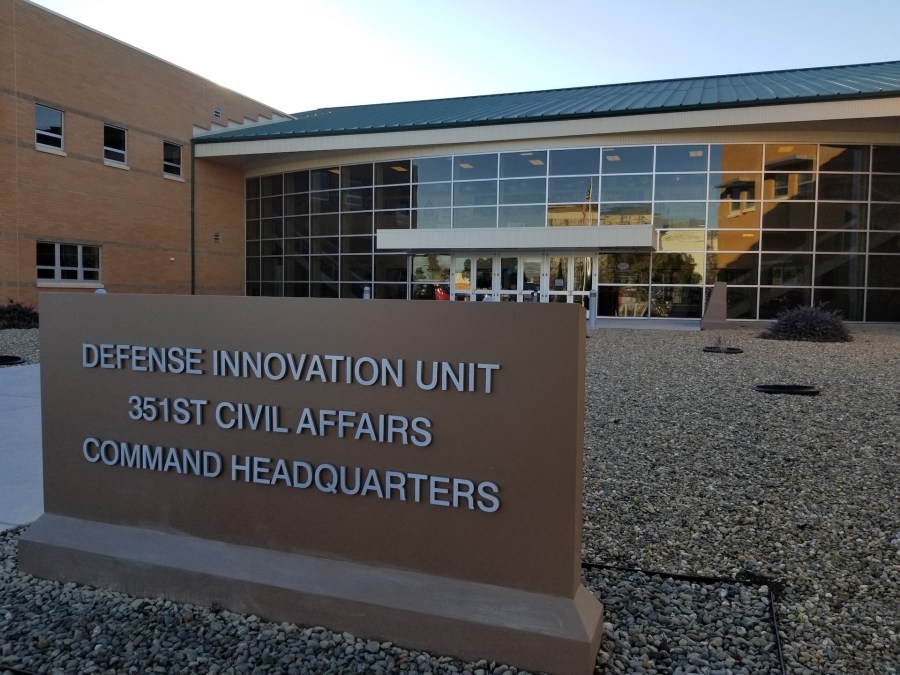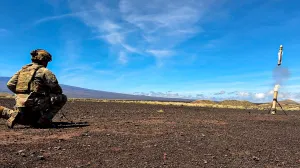Pentagon unveils winners of Replicator software contracts

Seven software vendors have been awarded prototype contracts to support the U.S. military’s Replicator initiative via a pair of commercial solutions openings, the Defense Innovation Unit announced Wednesday.
Viasat, Aalyria, Higher Ground and IoT/AI were selected among the 119 companies that submitted proposals for DIU’s Opportunistic, Resilient & Innovative Expeditionary Network Topology (ORIENT) commercial solutions opening. The firms are expected to provide technologies for “improving the resilience” of command-and-control capabilities for so-called “all-domain attritable autonomous” (ADA2) systems. A total of 130 solutions were proposed by interested vendors before the selections were made, according to a release.
Additionally, Swarm Aero, Anduril Industries and L3Harris Technologies were tapped to provide tools to facilitate “the automated coordination of swarms of hundreds or thousands of uncrewed assets across multiple domains in order to improve their lethality and efficiency.” Proposals were requested via the Autonomous Collaborative Teaming (ACT) commercial solutions opening. The winners were chosen among 132 companies that submitted a total of 165 proposed solutions, according to DIU.
DIU didn’t disclose the value of the contracts, though DefenseScoop reached out to obtain those numbers.
Last week, Deputy Secretary of Defense Kathleen Hicks announced that the Pentagon had tapped vendors to serve as “integrated software enablers” to help fully realize the department’s ambitious Replicator plans, but she didn’t identify the companies.
For Replicator tranches 1.1 and 1.2, the department selected a variety of unmanned systems — including uncrewed aerial vehicles, loitering munitions and maritime drones — for accelerated production to support Replicator, which is intended to help the department counter China’s military buildup in the Indo-Pacific by fielding thousands of robotic platforms.
Replicator 2.0, unveiled in September, is primarily focused on counter-drone systems.
However, drones and counter-UAS capabilities are only part of the broader Replicator effort. Software is seen as a key enabler of autonomy and networking chosen systems with other platforms.
“While these systems are valuable as single agents or swarms of like systems, they are most resilient and effective when they operate in combined teams that can collaborate with other types of systems across domains. Resilient C2 and collaborative autonomy vendors will enhance the effectiveness of these systems by providing user interfaces, collaborative autonomy architectures and software, and network orchestration. The enabling software technology will also allow Replicator systems to seamlessly connect robust long-haul communications solutions to redundant local mesh networks and ensure they can continue to operate as a system-of-systems in disconnected, disrupted, low-bandwidth, and intermittent environments. Together, these critical software enablers will enable so-called ‘heterogeneous collaboration’ between different Replicator systems fielded in the next year and lay the foundation for the Department’s broader push towards collaborative autonomy,” DIU officials wrote in the release.
The innovation unit, which was established less than 10 years ago by then-Secretary of Defense Ash Carter to serve as a bridge between the Pentagon and the commercial sector, is headquartered in Silicon Valley and has outposts in major tech hubs like Austin, Boston and other locations, as well as an office in the Pentagon. The organization is playing a key role in spearheading Replicator efforts by bringing additional companies into the fold and trying to get them on contract quickly.
“We believe that best in breed commercial software solutions can significantly enhance DoD modernization efforts,” DIU Director Doug Beck said in a statement Wednesday. “Many leading AI and autonomy firms are outside of our traditional defense industrial base, and DIU is working actively with partners across the Department to bring the very best capabilities from the U.S. tech sector to bear in support of our most critical warfighter needs. This latest step in the Replicator initiative is a critical example of that teamwork in action.”
At a Brookings Institution event Tuesday, Adm. Samuel Paparo, commander of U.S. Indo-Pacific Command, said unmanned systems like those being accelerated for Replicator offer significant benefits. They fit in with a “Hellscape” warfighting concept that he’s laid out for a potential conflict with China in the Taiwan Strait.
However, operational challenges in the region also highlight the need for other types of capabilities, he noted.
“Certainly, these systems are ideal in enclosed spaces … if you can deploy it. Then when you’re finished with doing this, you’re going to have to sustain those forces in Okinawa over wide-ranging space. To do so, you’re going to need air and maritime superiority. How am I going to do that?” Paparo said.
“For closed spaces for executing sea denial, this can be a very key capability. But air and maritime superiority are going to be important over wide expanses, and that means energy and energy density. And here the coin of the realm is dazzle, deceive [and] destroy an enemy’s capability to see and sense the battlespace; maneuver in periods where an enemy can’t see; bring long-range fires on an enemy; gain that capability to maneuver; and sustain across seven joint functions — and one of those joint functions is sustainment,” he added.
The U.S. military can’t achieve that type of superiority just because “we got some drones,” the admiral said.
DefenseScoop asked Paparo if Indo-Pacom was planning to deploy large numbers of Replicator systems on U.S. ships and aircraft to avoid some of the complications associated with stationing them on the territory of allies in the region.
“Probably, yeah,” he replied.






